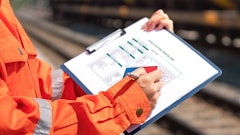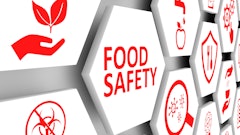
Planning for the probable to the unthinkable, that’s what food supply chain executives are tasked with daily. Uncertainty complicates the picture, and the Food Safety Modernization Act (FSMA) is responsible for plenty of that—deadlines that are repeatedly missed, legal action, proposed regulations that threaten to raise costs, and a lack of communication and understanding between government and the private sector. Food companies and logistics providers frequently mention the FSMA as one of the biggest impacts on the global food supply chain in years, but no one knows yet how those costs and operational impacts might potentially manifest.
In response, while some companies are choosing to respond proactively, others seem frozen by confusion, complacency, or calculated risk (In other words, “We’re willing to make ‘these’ changes, but not ‘those,’ and we believe we could absorb the consequences if something ‘bad’ were to happen.”)
For this issue’s feature on food safety, “Food Safety From A to Z,” we invited several industry executives to share what they were seeing in the marketplace.
Not surprisingly, the FSMA is a common thread in many of their contributions.
Meanwhile, on the extreme side of risk planning for global food supply chains, there are the statistical long shots, the black swan events, and they’re not as obscure as you might think.
Hiroyuki Konuma, the assistant director-general of the United Nations’ Food and Agriculture Organization in the Asia-Pacific, cautioned earlier this month that the world needs to produce 60 percent more food by 2050 or “there will be a high risk of social and political unrest, civil wars and terrorism, and world security as a whole might be affected.”
Unfortunately, increasing arable land and boosting food productivity rates are difficult or nearly impossible.
It gets worse.
One news organization reported recently that, “Several factors could exacerbate the potential for apocalyptic famines. In November, a leaked draft of an Intergovernmental Panel on Climate Change report warned that climate change could cause a 2 percent drop each decade of this century. In the past three years, for example, Australia, Canada, China, Russia and the United States have all suffered big flood and drought induced harvest losses.”
Add to that a convergence of diets around the world, and a reliance on a shrinking group of crops that leaves “global food supplies increasingly vulnerable to inflationary pressure, insects and disease,” and the precariousness of the global food supply chain doesn’t seem so far fetched.
Coincidentally, a development producer for WAGTV in the UK contacted me several weeks ago. She was working on a feature length drama for National Geographic, a “fictitious” story about what might happen to the food supply chain should there be a major economic collapse or a major civil unrest, and she was interested in my opinion.
‘What if the unthinkable happened and how would that affect the supply chain?’
We can’t sidestep any possibility, no matter how uncomfortable.
On a positive note, we have to pursue all options when it comes to protecting and optimizing the global food supply chain. Our cover story on page 14 sheds some light on how we might answer ‘What if?’
Enjoy the read.


















